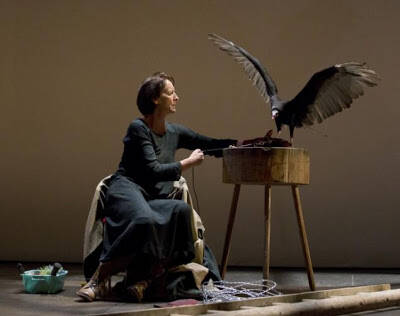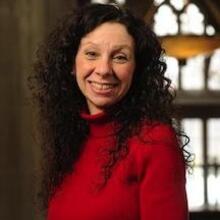May is the month in which the church honors Mary; by happy coincidence, it is also the month when secular culture honors mothers. According to the Bible, Mary’s role in salvation history is small but mighty. Through the agency of the Holy Spirit, she conceives the Messiah, gives birth to Jesus and raises him to adulthood. She appears at a few key moments in Christ’s ministry—searching frantically for him and finding him teaching in the temple; urging him to assist the hapless hosts at Cana; and, finally, standing vigil beneath the cross. These brief glimpses into the hidden life of Mary suggest that she was an attentive mother, a bit pushy when she needed to be and faithful to her son in his darkest hour.
Admittedly, this isn’t much to go on. It seems that the woman given the title Mother of God might have warranted more space in the Scriptures. The Koran contains more mentions of Mary than the Bible—34 references, listing her genealogy and even depicting her childhood. Perhaps it is this relative lack of information about Mary in Christian tradition that has inspired so many artists over the centuries to fill in the gaps. It is the nature of human beings to try to imagine what they cannot know. Given this paucity of knowledge, painters and poets are free to depict Mary as they choose, so long as their images conform to the few established biblical “facts.” As a result, artists have had a field day with Mary. No woman has been represented more often in painting and sculpture, inspired more music or had more poems penned in an effort to express her unspoken heart.
A new, and highly unorthodox, depiction of Mary has been in the public eye of late, the Irish writer Colm Toíbín’s play “The Testament of Mary.” The one-woman play, first produced in Dublin, was recast as a novella, and has returned to the stage, newly revised for Broadway. The play received several Tony nominations this week, including one for Best Play, but the producers announced it would nonethless close on Sunday May 5.
I greeted the publication of the novella with enthusiasm and attended the play as soon as I could get a ticket. As a devotee of art and literature, I’ve enjoyed the many versions of Mary I have met on the walls of churches and museums and in the pages of books. Most of those incarnations, especially the more contemporary ones, have emphasized Mary’s humanity over her sanctity, dramatizing the ways in which she is like us ordinary mortals. In Henry Tanner’s arresting painting “The Annunciation,” for instance, we see Mary’s youth and vulnerability. There is fear in her eyes as she regards the intruding angel, shown as an explosion of light. In John Collier’s painting “Pietà,” Mary cradles her dead son, embracing him with both arms and legs in a posture reminiscent of childbirth. Her grief is harrowing. Such depictions of Mary bring her closer to us—and us closer to her. This is especially true for those of us who are mothers, who know what it is to conceive and give birth and fall in utter love with a child.
And here is where Colm Toíbín lost me. Much as I admire his writing, I could not countenance his Mary. It is not Mary’s unorthodoxy that troubles me. Toíbín is trying to deconstruct the images of the passive, bloodless Mary that dominated pietistic art of the 19th and 20th centuries; and I, along with most of his readers, welcome that corrective. What troubles me about his Mary is that she is a coward. After her son is nailed to the cross—a scene described in agonizing detail—Mary runs away. She runs away because she cannot help him, because she is afraid and (here is the hardest part to swallow) because she wants to save her own skin.
Toíbín sins here against Scripture and tradition, yes, but also against the more universal code of Motherlove—that irresistible compulsion that drives a mother to protect her child at any cost. Motherlove is the deep knowledge that you would stand between a killer and your child and take a bullet in the face, that you would dive in front of a runaway train to shove your child off the track, that you would part with your own heart if your child needed it and that you would do this gladly. The inventions of tradition and bad art have provided us with too many impossible Marys who bear no relation to us. Do we need another? Toíbín denies Mary what makes her most human, sinning at last against the law of verisimilitude, and giving us one more Mary we cannot believe in.
UPDATE: America contributor Rob Weinert-Kendt weighs in on the "The Testament of Mary" here.








